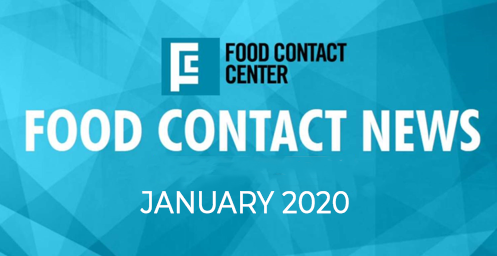NEUHEITEN

Food Contact News
EUROPE
EFSA: UPDATED RISK ASSESSMENT OF FIVE PHTHALATES
European Food Safety Authority publishes updated risk assessment for the phthalates DBP, BBP, DEHP, DINP, DIDP; retains developed group and individual tolerable daily intake limits; finds no current public health concern but cautions that values set are temporary due to uncertainties
EFSA announced the publication of the updated risk assessment completed by the Panel on Food Contact Materials, Enzymes and Processing Aids (CEP Panel) on the five phthalates DBP (CAS 84-74-2), BBP (CAS 85-68-7), DEHP (CAS 117-81-7), and DINP (CAS 28553-12-0). The final updated assessment retains the established group tolerable daily intake (TDI) of 50 μg/kg body weight (bw) per day for DBP, BBP, DEHP, and DINP as was set in the draft scientific opinion based on reduction of testosterone in fetuses.
The phthalate DIDP also retains its own separate TDI of 150 μg/kg bw per day, calculated based on its effects on the liver. The assessment found that current exposure to these phthalates from food is not of concern for public health. For DBP, BBP, DEHP, and DINP, exposure was found to range from 7 μg/kg bw to a maximum of 12 μg/kg bw (between seven and four times below the set TDI). For DIDP, dietary exposure was found to be 1,500 times below the set TDI. However, EFSA cautions that these TDIs have all been set “on a temporary basis due to uncertainties about effects other than the
reproductive ones and about the contribution of plastic FCM to overall consumer exposure of phthalates.”
NORTH AMERICA
CONNECTICUT RELEASES PFAS ACTION PLAN
Connecticut has published an action plan on per- and polyfluoroalkyl substances (PFAS) that includes several recommendations related to food packaging
The PFAS Action Plan was developed by the Connecticut Interagency PFAS Task Force, which Governor Ned Lamont established on July 8, 2019. Governor Lamont charged the PFAS Task Force to develop an action plan to minimize health risks for Connecticut residents’ resulting from PFAS
exposure, to minimize future releases of PFAS to the environment, and to address historic releases of PFAS to the environment. Among the recommended intermediate actions impacting food packaging are: Evaluate PFAS levels in compost derived from food waste containing compostable food containers, disposable cutlery, and/or PFAS-treated paper products. Convene an ad hoc group to review the most current research and nationwide actions regarding food packaging, consumer products, and the recycling thereof. Develop recommendations for reducing PFAS exposures, such as considering an Extended Producer Responsibility (EPR) program for effective management of waste from PFAS-containing products.